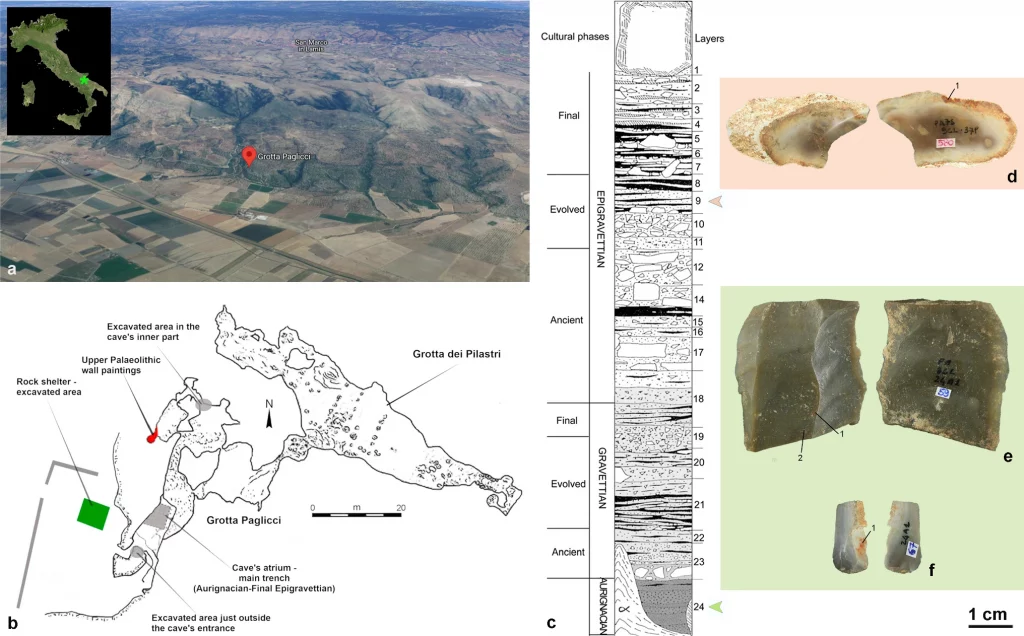A multi-technique approach to study Palaeolithic residues
|Residue analysis for the study of Palaeolithic represents a powerful discipline to understand how stone tools were used by past human populations, based on the chemical analysis of the organic and inorganic substances that remained trapped on their surface during ancient human activities. However, this type of analysis is far from trivial when dealing with artefacts – and residues – that are tens of thousands of years old.

To address this issue, Dr. Clarissa Dominicini, Dr. Chiaramaria Stani and Dr. Alessandra Gianoncelli (respectively CERIC PhD student at the University of Siena, CERIC post-doc researcher and Head of TwinMic beamline at Elettra Synchrotron) developed, together with other colleagues from the Elettra Synchrotron, the Ruđer Bošković Institute and the University of Siena, a new methodological protocol that exploits advanced material analysis and characterisation techniques.
In particular, they took advantage of the SISSI-Bio and TwinMic beamlines (available at the Italian CERIC partner facility Elettra Synchrotron) and of the PIXE technique available in the Laboratory for Ion Beam Interactions (at the Croatian CERIC partner facility Ruđer Bošković Institute) to study lithic artefacts retrieved from the Upper Palaeolithic (40,000–13,000 years ago) stratigraphic sequence of Grotta Paglicci (Apulia, Italy).
Through the use of complementary spectroscopic techniques, namely infrared, X-ray fluorescence and particle induced X-ray emission microscopies, they were able to map the same regions of each sample to obtain a spatial correlation between its molecular and elemental composition to the micro-scale, allowing the identification of three different iron-rich compounds. This study paves the way for the development of new analytical protocols for residue analysis in the field of Palaeolithic studies, to allow the reconstruction of the ways of life of our ancestors, as well as to get pivotal information on their technology, behaviour, and adaptation to the environment.
ORIGINAL ARTICLE:



